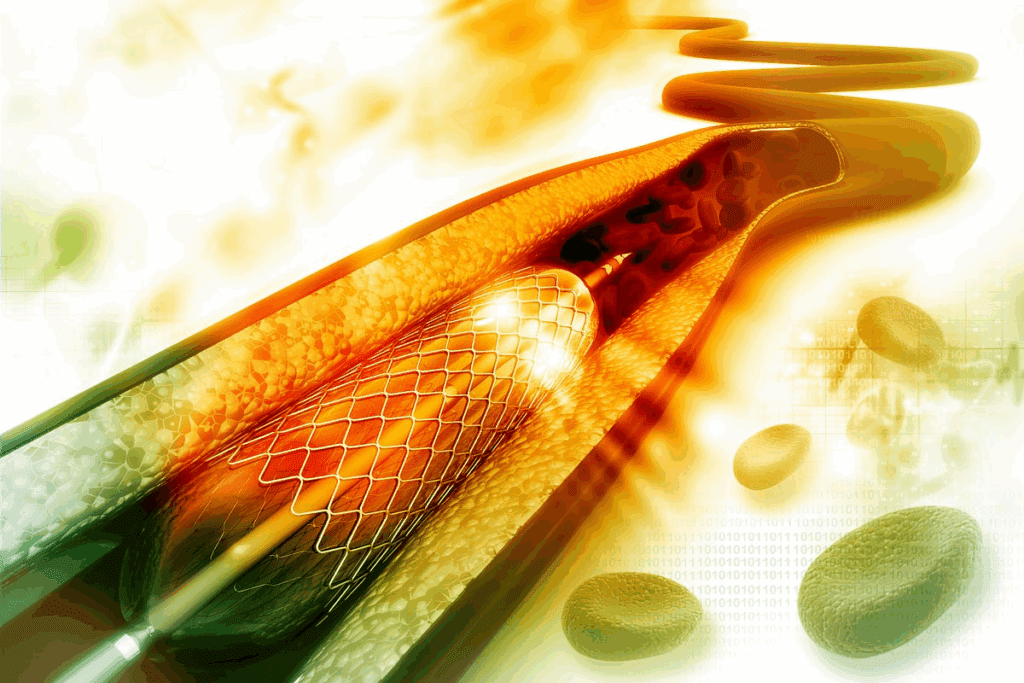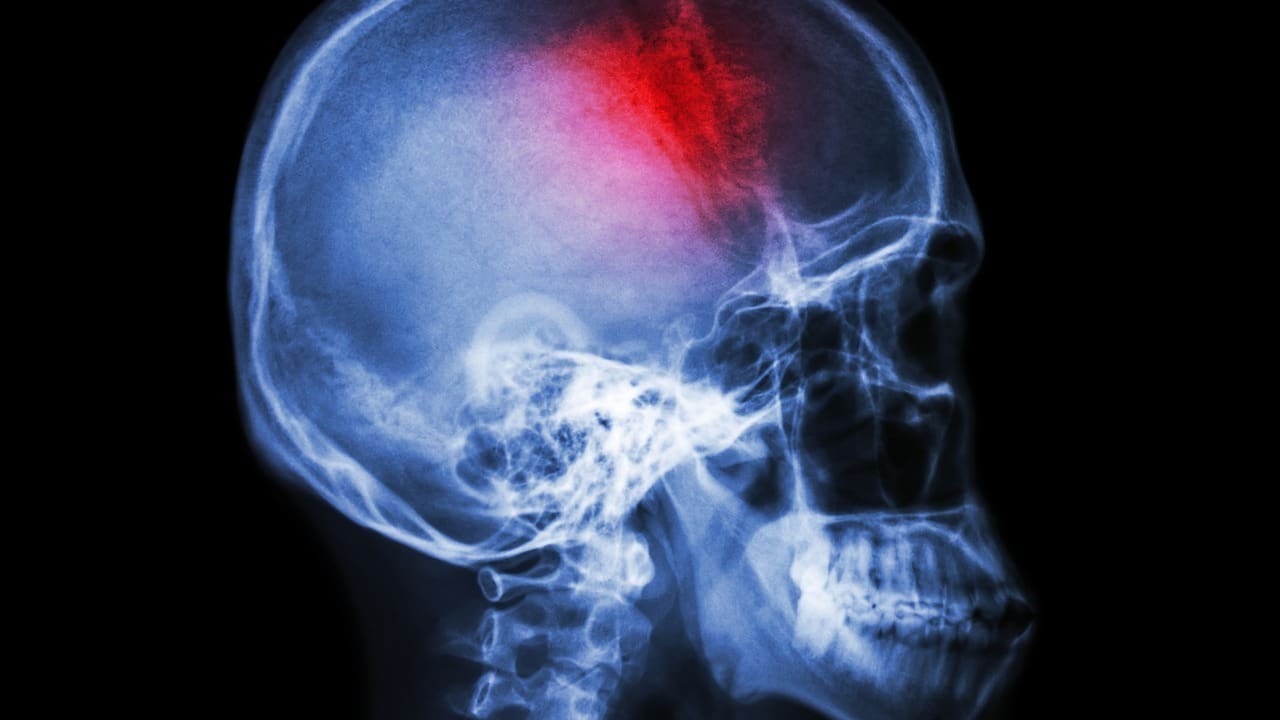Last Updated on November 26, 2025 by Bilal Hasdemir

At Liv Hospital, we know how complex cardiac stents can be. Patients often worry about their heart health. Cardiac stents help by opening blocked arteries and improving blood flow. How many stents can a person get? Our expert guide explains the possibilities, safety limits, and risks of multiple heart stents.
The number of stents needed varies. It depends on the patient’s health, the heart’s shape, and how bad the blockage is.
It’s important to know the limits and risks of stent placement. We focus on our patients, making sure each procedure is safe and well-planned. Our team works with each patient to find the right treatment for them.
Key Takeaways
- There is no absolute limit to the number of stents a person can have.
- The number of stents depends on individual medical needs and the severity of coronary artery disease.
- Cardiac stents restore blood flow through blocked arteries.
- A patient-centered approach ensures safety and care in stent placement.
- Liv Hospital’s expert team determines the best treatment course for each patient.
Understanding Cardiac Stents and Their Purpose

Cardiac stents are used to treat coronary artery disease. They are small, expandable metal mesh tubes inserted into the affected artery. This improves blood flow. It’s key in managing symptoms and improving outcomes for patients with coronary artery disease.
What Are Cardiac Stents?
Cardiac stents are small, mesh-like tubes made of metal. They are inserted into the coronary arteries to keep them open. The primary purpose of a cardiac stent is to restore blood flow to the heart muscle, which can become compromised due to plaque buildup.
How Stents Work to Treat Coronary Artery Disease
Coronary artery disease happens when plaque builds up in the arteries, causing them to narrow. This narrowing can lead to reduced blood flow to the heart, resulting in chest pain or even heart attacks. Stents are inserted into the narrowed artery during angioplasty.
Once in place, the stent expands to keep the artery open. This improves blood flow and reduces symptoms.
Types of Cardiac Stents Available Today
There are several types of cardiac stents available, each with its own characteristics. The main types include:
| Type of Stent | Description | Key Features |
| Bare-metal Stents | Made of metal mesh | Simple design, less risk of allergic reactions |
| Drug-eluting Stents | Coated with medication | Reduces risk of restenosis, releases medication to prevent cell growth |
| Bioresorbable Stents | Made of absorbable material | Dissolves over time, potentially reducing long-term complications |
Each type of stent has its own advantages. They are chosen based on the patient’s specific condition and medical history.
The Anatomy of Coronary Arteries and Stent Placement

The coronary arteries are key to the heart’s blood supply. Knowing their anatomy is key for placing stents right. These arteries branch from the aorta and circle the heart, giving it oxygen and nutrients.
Structure and Function of Coronary Arteries
The coronary arteries have three layers: intima, media, and adventitia. The intima is where plaque builds up, causing disease. Knowing this helps doctors diagnose and treat blockages.
Common Locations for Stent Placement
Stents are often placed in the LAD, LCx, and RCA arteries. The location depends on the blockage’s severity and where it is.
Anatomical Considerations That Affect Stent Numbers
The number of stents needed varies with the blockage’s length and complexity. Bifurcation lesions also play a role. Complex cases might need more stents or special techniques.
| Anatomical Factor | Impact on Stent Placement |
| Length of Blockage | Longer blockages may require multiple stents |
| Bifurcation Lesions | May require specialized stenting techniques |
| Artery Size | Affects stent size and type |
How Many Stents Can a Person Get? Factors That Determine the Limit
The number of stents a person can have depends on several factors. These include their medical needs and the heart’s anatomy. We look at different elements to decide how many stents are right for a patient.
Individual Medical Needs Assessment
It’s important to assess a patient’s medical needs to figure out stent numbers. We check their health, the severity of their heart disease, and their medical history. We also look at diabetes, kidney disease, and past heart conditions to meet their specific needs.
Heart Anatomy Variations
Every person’s heart is different, and this affects stent numbers. We examine the size and shape of coronary arteries and any unique features to ensure stents are placed safely and effectively.
Severity and Extent of Coronary Artery Disease
The extent of heart disease is a big factor in stent numbers. We check how blocked the arteries are and how many are affected to choose the best treatment. Sometimes, more than one stent is needed to improve blood flow.
Physician Experience and Facility Capabilities
The doctor’s experience and the facility’s capabilities also matter. Experienced doctors in well-equipped places can handle complex cases and may use more stents when needed. Their skill is key to good patient outcomes.
In summary, the decision on stent numbers is very personal. It depends on medical needs, heart anatomy, disease severity, and the doctor’s team. By carefully looking at these factors, we can find the best treatment for each patient.
- Individual medical needs assessment
- Heart anatomy variations
- Severity and extent of coronary artery disease
- Physician experience and facility capabilities
These elements help us make the right choices for patients. This ensures they get the safest and most effective treatment.
Typical Scenarios: From Single to Multiple Stent Procedures
Stent placement isn’t a one-size-fits-all situation. Patients might get from one to dozens of stents. The number needed depends on the disease’s severity, heart anatomy, and the doctor’s expertise.
Common Cases: 2-5 Stents
Most people get between 2 to 5 stents. This is because:
- They often have blockages in different arteries.
- Stents are often used with other treatments like angioplasty.
- Doctors can place multiple stents in one go or over several visits, based on the patient’s health and the doctor’s plan.
For example, someone with blockages in two major arteries might get two stents at once. They might need more later if new blockages happen.
Extraordinary Cases: Patients with 35+ Stents
There are cases where patients get 35 or more stents. These are rare and usually involve:
- Severe and widespread coronary artery disease.
- Previous stents that have closed up or narrowed again.
- Complicated medical histories that make treatment harder.
These cases show how important ongoing care is for those with severe heart disease.
Sequential vs. Simultaneous Stent Placement
Doctors decide whether to place stents one at a time or all at once. This choice depends on:
- The patient’s health and risk factors.
- The blockages’ complexity and location.
- The doctor’s experience and the hospital’s capabilities.
Sequential Stent Placement: Gives time to recover between procedures, which might lower risks. It’s often chosen for complex or high-risk cases.
Simultaneous Stent Placement: Is quicker, needing fewer procedures and possibly saving money. But, it carries higher risks and needs careful planning.
Multiple Stents in a Single Procedure: Possibilities and Limitations
Putting multiple stents in one go is a tricky topic. It involves looking at technical challenges and how well the patient can handle it. We need to understand what makes it okay to put more than one stent in at once.
How Many Stents Can Be Placed at One Time
The number of stents in one go can vary a lot. Doctors decide based on the patient’s needs and how bad the heart disease is. While it’s not the same for everyone, research shows it can work well if done carefully.
A study in the Journal of the American College of Cardiology found good results. Patients with more stents did as well as those with just one, if the doctor was experienced.
Technical Challenges of Multiple Stent Placement
Putting in more stents at once has its own set of problems. There’s a higher chance of complications like stent blockage or narrowing. Also, the more stents, the more radiation and dye the patient and doctors get exposed to.
To lower these risks, using advanced imaging and careful planning is key. Tools like IVUS or OCT help place stents right and ensure they fit well.
Recovery Considerations After Multiple Stent Procedures
Recovering from multiple stents needs close watch and care. Patients might need to stay longer in the hospital to catch any problems early. After, they’ll need to be checked for heart issues, manage their meds, and get advice on living healthier to avoid future heart problems.
“The key to successful recovery is a multidisciplinary approach that involves not just the cardiologist but also the primary care physician, nurses, and other healthcare professionals,” said a leading cardiologist.
Patient Tolerance Factors
How well a patient can handle multiple stents matters a lot. Things like age, other health issues, and overall health play a big role. For example, people with kidney problems need extra care because of the risk of kidney damage from dye.
We must look at each patient’s unique situation. Then, we can plan a treatment that weighs the benefits of more stents against the risks.
Stacking Stents in a Single Artery: Technical Considerations
Placing multiple stents in one artery is called stacking stents. It needs a deep understanding of the heart’s structure and stent technology. This method is used for patients with severe heart disease, where one stent is not enough.
How Many Stents Can Be Placed in One Artery
The number of stents in one artery varies. It depends on the length and type of blockage, the artery’s size, and the heart’s overall shape. There’s no fixed limit, but each case is judged carefully to balance benefits and risks.
Overlapping Stents: Benefits and Concerns
Overlapping stents are used for long or complex blockages. They help keep the artery open and lower the chance of blockage coming back. But, there’s a worry about increased clotting risk and damage to the artery wall.
Key considerations for overlapping stents include:
- Careful planning to minimize overlap
- Choosing stents that work well together
- Watching for any complications
Vessel Size and Its Impact on Stent Quantity
The size of the artery is key when deciding on stents. Bigger arteries can handle more stents, but smaller ones face higher risks like clotting or narrowing.
| Vessel Size | Stent Quantity Considerations |
| Large (>3.5 mm) | More likely to accommodate multiple stents |
| Medium (2.5-3.5 mm) | Moderate risk; careful planning required |
| Small ( | Higher risk; alternative treatments considered |
Bifurcation Lesions and Complex Stenting Techniques
Bifurcation lesions are tricky because they involve two arteries branching off. Special stenting techniques, like “T-stenting” or “culotte,” are used to fix these.
The management of bifurcation lesions requires:
- Expertise in interventional cardiology
- Advanced imaging techniques
- Careful selection of stenting strategy
Medical Guidelines on Multiple Stent Procedures
Guidelines for multiple stent procedures have changed to tackle coronary artery disease’s complexities. It’s key for healthcare providers and patients to grasp these guidelines as we improve in cardiac care.
Current Best Practices in Stent Placement
Today, stent placement focuses on a personalized approach. This considers each patient’s unique anatomy and health. “Choosing the right stent type, size, and placement is vital for the best results,” say top cardiologists.
We use advanced imaging to guide stent placement. This ensures accuracy and lowers the chance of complications.
The “Minimum Necessary” Approach
The “minimum necessary” stent use is a key part of modern cardiology. It aims to cut down on complications while treating coronary artery disease. Using fewer stents can lower the risk of restenosis and other problems.
When Bypass Surgery May Be Preferred Over Multiple Stents
In some cases, CABG might be better than multiple stents. This choice depends on the disease’s complexity, the number of blockages, and the patient’s health. A study found that CABG is often the preferred option for complex multivessel disease.
We weigh many factors, like the patient’s medical history and disease severity, when choosing between stenting and bypass surgery.
International Standards and Protocols
International standards for multiple stent procedures are based on thorough research and trials. These guidelines are updated regularly to keep up with new discoveries. Following these standards ensures our patients get top-notch care, in line with global best practices.
As we learn more about coronary artery disease and its treatment, a detailed approach is essential. By sticking to established guidelines and considering each patient’s needs, we can improve outcomes for those with multiple stent procedures.
Risks Associated with Increasing Numbers of Stents
Doctors carefully consider the risks when deciding to use more than one stent. The number of stents needed depends on the patient’s health and the disease’s severity. But, more stents can lead to more complications.
Restenosis: The Risk of Artery Re-narrowing
Restenosis is a big risk with stents. It happens when the body grows new tissue, blocking the artery again. This is a worry, as it might need more procedures to keep the artery open.
Key factors that influence restenosis risk include:
- The type of stent used (drug-eluting vs. bare-metal)
- The location and number of stents placed
- Patient factors such as diabetes and smoking status
Research on Multiple Stents and Increased Complications
Studies show that more stents mean more risks. It’s vital to choose patients carefully, place stents precisely, and follow up well to reduce these risks.
Recent research found that more stents lead to more complications. This highlights the need for a personalized approach to stent placement, based on the patient’s specific situation.
Thrombosis: Blood Clot Formation in Stents
Thrombosis, or blood clots in stents, is a serious risk with multiple stents. It can cause heart attacks. The risk depends on the stent type, antiplatelet therapy, and patient medication adherence.
To lower thrombosis risk, patients with multiple stents usually take dual antiplatelet therapy (DAPT) for a time set by their doctor.
Medication Requirements with Multiple Stents
Patients with multiple stents often need to take medication for life. This includes drugs to prevent clots and others to manage cholesterol and blood pressure.
It’s very important for patients with multiple stents to take their medication as prescribed. Not taking medication as directed can increase the risk of complications like thrombosis and restenosis.
Long-term Outcomes and Quality of Life with Multiple Stents
Living with multiple stents means understanding their long-term effects on health and daily life. It’s key to look at both immediate and long-term impacts on patients. This helps us manage coronary artery disease better.
Survival Rates and Prognosis
Survival rates for those with multiple stents depend on many factors. These include the disease’s extent, overall health, and treatment adherence. Research shows that stents can greatly improve survival by lowering heart attack risks.
Yet, they also add complexities that can affect long-term health. Each patient’s journey is different. Prognosis depends on many factors, including other health conditions and lifestyle choices.
Activity Limitations and Lifestyle Adjustments
Patients with multiple stents often need to make lifestyle changes. This includes dietary changes, tailored exercise, and quitting smoking if needed. These changes are vital for better health and survival.
Having multiple stents doesn’t mean you can’t be active. It just means you need to be more careful about your physical activities and health management.
Follow-up Care Requirements
Follow-up care is essential for managing multiple stents. Regular check-ups, monitoring of heart function, and medication adjustments are part of this care. This helps catch and treat problems early, improving long-term health.
- Regular cardiac check-ups
- Monitoring for signs of restenosis or other complications
- Adjustments to medication regimens as needed
Managing Expectations for Patients with Multiple Stents
Managing expectations is vital for patients with multiple stents. It’s about understanding the benefits and limits of stents and the importance of lifestyle changes and follow-up care. By setting realistic goals and working with healthcare teams, patients can better handle life with multiple stents.
We stress the need for a team effort between patients and healthcare providers. This approach helps improve long-term outcomes and quality of life.
Alternative Treatments When Multiple Stents Aren’t Ideal
For patients not suited for multiple stents, alternative treatments offer good options. Stenting is common for coronary artery disease. But, sometimes other methods work better.
Coronary Artery Bypass Grafting (CABG)
Coronary Artery Bypass Grafting, or CABG, is a surgery. It makes a new path around blocked arteries. We choose CABG for severe disease or when stenting is not possible.
Benefits of CABG: It boosts blood flow, eases symptoms, and may extend life. Yet, it’s more invasive than stenting and takes longer to recover.
Medication-Based Management Approaches
Medication management is a good choice for some. It controls symptoms and slows disease with drugs, lifestyle changes, and check-ups.
Key components include:
- Antiplatelet drugs to prevent clotting
- Statins to lower cholesterol
- Beta-blockers to control heart rate and blood pressure
- Nitrates to ease chest pain
Emerging Technologies and Treatments
New technologies and treatments are coming for coronary artery disease. Some include:
- Bioresorbable stents that dissolve
- Drug-coated balloons for direct medication delivery
- Advanced imaging for better diagnosis and planning
Lifestyle Modifications as Complementary Therapy
Lifestyle changes are key in managing coronary artery disease. They can be used alone or with other treatments. We suggest a heart-healthy lifestyle, including:
- Eating a balanced diet with fruits, veggies, and whole grains
- Regular exercise suited to the patient’s health
- Quitting smoking
- Managing stress
- Keeping a healthy weight
Combining these lifestyle changes with other treatments can improve outcomes. It may also reduce the need for multiple interventions.
Conclusion
Choosing to use multiple cardiac stents is a big decision. It requires looking at both the good and bad sides. Knowing what affects stent placement is key for the best results.
We’ve talked about what decides if you need more than one stent. This includes your health needs, the shape of your heart, and how bad your heart disease is. How many stents you can get and if they work well depends on many things.
Even though using more stents can help with heart disease, it’s important to know the risks and benefits. This knowledge helps both patients and doctors make smart choices about treatment.
The main aim of using cardiac stents is to help patients live better lives. By carefully thinking about the need for more stents and looking at other options, we can give the best care to those with heart disease.
FAQ
How many stents can be placed in the heart?
The number of stents in the heart varies. It depends on the person’s health, heart shape, and disease severity. We look at each case to decide the right number of stents.
What is the maximum number of stents a person can have?
There’s no fixed limit on stents. But, we only use them when needed. This depends on the patient’s health and disease complexity.
Can you have multiple stents in one artery?
Yes, multiple stents in one artery are possible. But, it’s a complex decision. We consider the artery size and risks like restenosis and thrombosis.
How many stents can be placed during a single procedure?
The number of stents in one procedure varies. It depends on the patient’s health, disease complexity, and the doctor’s judgment.
What are the risks associated with having multiple stents?
Multiple stents carry risks like restenosis and thrombosis. They also mean longer medication use. We weigh these risks against benefits for each patient.
Are there alternative treatments to multiple stenting?
Yes, there are alternatives. These include CABG, medication, new technologies, and lifestyle changes. The best option depends on the patient’s case and medical advice.
How do multiple stents affect long-term outcomes and quality of life?
Multiple stents can affect long-term health and life quality. We consider survival, activity, and follow-up care. We aim to manage expectations and improve outcomes.
Can having 4 or 5 stents in the heart lead to significant health issues?
Having 4 or 5 stents is complex. While some may not face big issues, others might. We closely monitor patients to address concerns.
Is it possible to have 6 stents in the heart?
Having 6 stents is technically possible. But, we decide on a case-by-case basis. We consider the patient’s condition and disease extent.
How many stents can be placed in one session?
The number of stents in one session depends on the medical team. They consider the patient’s condition, procedure complexity, and risks and benefits.
Reference
- Fröhlich, G. M., et al. (2023). Long stent implantation on the left anterior descending artery: Long-term outcomes. PMC. https://pmc.ncbi.nlm.nih.gov/articles/PMC10779530






